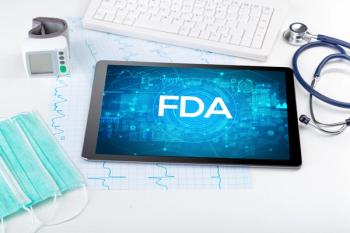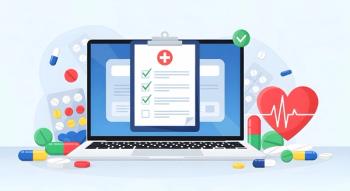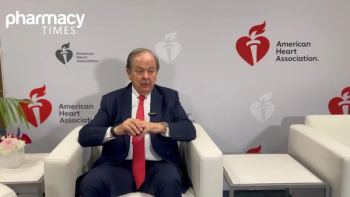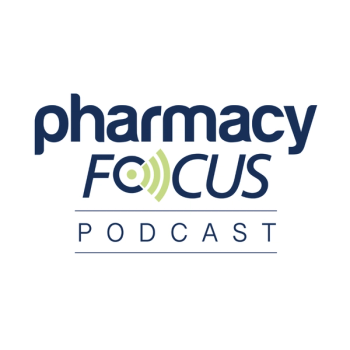
Getting Familiar with Biosimilars
Ron Lanton III, Esq, discusses all things biosimilar during a session at the National Association of Specialty Pharmacy (NASP) Annual Meeting and Educational Conference.
Despite the growth of the biosimilar market, confusion persists surrounding specialty medications.
In a session at the National Association of Specialty Pharmacy (NASP) Annual Meeting and Educational Conference, Ron Lanton III, Esq, president of True North Political Solutions, presented an in-depth look at the budding biosimilar market, as well as costs, policy, and outlook for these medications.
A biosimilar is made from a living organism and is a highly-similar copy of the reference product. There are no clinically meaningful differences in terms of safety and efficacy from the reference product that they are compared to.
A biosimilar will only gain FDA approval if it has the same mechanism of action, route of administration, dosage form, and strength as the reference product itself. Furthermore, it can only be approved for indications previously approved for the reference product.
“Biosimilars are not exact copies of an originator product. This means that they’re similar, but they cannot have the exact formation of the biologic because the biosimilar manufacturer does not have access to the reference product’s molecular clone or original cell bank,” Lanton said during the session. “Biologics also use living material, and there is no way to completely duplicate the process without the originator’s exact biologic material that it uses.”
Biosimilars also differ from generics regarding handling requirements—–because biologics and biosimilars consist of living material––and have more intense black box warnings.
Although the process of approval of biosimilars is governed by the Biologics Price Competition and Innovation Act of 2009 (BPCI), their approval would not be possible without the Drug Price Competition and Patent Term Restoration Act of 1984, informally known as the Hatch-Waxman Act.
The Hatch-Waxman Act created a streamlined process for approval by the FDA and a mechanism for litigation for patent infringement disputes, Lanton said in the session.
“Without Hatch-Waxman, without that landmark law, there would be no process for generics and there will be no pathways for biosimilars to come later into the marketplace as we evolve.”
According to Lanton, one of the most important differences between generics and biologics is how they are protected. Originator biologics have more time before a biosimilar application can be processed by the FDA.
Through the Hatch-Waxman Act, the originator product has 12 years of data exclusivity. This exclusivity provides the reference product with added protection by creating a barrier for biosimilar applications for 12 years before an application can be filed. Additionally, it runs concurrently with the originator’s patent terms, Lanton noted.
To provide a better understanding of the differences between biosimilars and biologics, Lanton gave a simplified example of these differences using the infamous Boudin’s Bread in San Francisco, California.
The company has been using the same mother yeast to produce all its breads since 1849. Although others claim their sour dough is the same, it differs because they do not have the same yeast. In other words, although they are both sour dough bread, the living organisms within the yeast differs and they are not exact copies.
So how do biosimilars impact the marketplace? Thus far, there has been a limited number of biosimilar approvals in the United States. Additionally, because biosimilars must create its own cell bank, it takes significantly more time to create than a generic. This translates to less options in the marketplace and less patient access to lower cost treatment options.
Biosimilars can cost up to 30% less money than the originator; however, the savings are not as much as those provided by generics. The process and added time biosimilars undergo in terms of proving similarities to the FDA, makes the biosimilar a lot more expensive than once perceived, according to Lanton.
Additionally, manufacturers of the reference product are using different tactics to help protect patents.
There are significant differences in development and cost between traditional generic and biosimilar products. The development of generics take an estimated 1 to 3 years and cost approximately $2 to $5 million compared with biosimilars, which take an estimated 8 to 10 years and cost approximately $100 to $200 million.
Although biosimilars have been heralded as a less expensive alternative to costly biologics, the prices are not as low as many hoped. Currently, pricing ranges from 15% to 30% less than the originator.
There are several reasons why the cost is not as low as generics, including the use of biologic material as opposed to chemical components, which makes it a little pricier; longer clinical trials; higher costs spent on patent infringement cases to protect the reference product; and exclusivity periods, according to Lanton.
Although Medicare’s current policies may not reflect these results currently, there could be a drop in biosimilar prices in the future.
Many insurers are beginning to dabble in value-based agreements by creating pricing contracts that compares the price with the drug’s performance.
“With the increased use of these (value-based) types of contracts, it may lower biosimilar prices further,” Lanton said in the session. “Most insurers have looked to create contracts just for one specific drug. And there has been a move to create contracts that go further by contracting for the entire portfolio of a company, and this can include a biosimilar in the future.”
Other approaches companies are beginning to take is via partnership development. This means, companies are sharing the risk of biosimilar development. As a result, sharing the cost of development may lower the price when a biosimilar is launched, according to Lanton.
Federal Policy
The Affordable Care Act (ACA) is essentially what placed biosimilars in US law, giving the FDA control over the approval of biosimilars via the BPCI Act.
But unlike other laws, the ACA does not have a severability clause. This means if part of the law should be struck down by accord, then the entire law is unconstitutional. Furthermore, if the law is appealed in its entirety then the biosimilars will go with it.
“[However], since it has not been repealed, biosimilars are safe and there is no indication that biosimilars are in trouble even if parts of the ACA are replaced,” Lanton said.
Although generics and biosimilars are very different, Lanton advised specialty pharmacies to keep a close eye on policies surrounding generics because they may be reflected for biosimilars in the future.
There is a new push to approve both biosimilars and generics quickly. FDA Commissioner Scott Gottlieb recently spoke of the Drug Competition Plan to achieve this goal; however, it is only aimed at generics presently.
Although it remains uncertain whether it will be extended to include biosimilars, Lanton said he would not be surprised if something similar was put in place for biosimilars once the issue of interchangeability is resolved.
The naming of biosimilars is also a murky area. Unlike the orange book, which the FDA is required to publish, the purple book has no requirements but usually is published. The purple book is a list of biologics that was first published in 2014.
There has been much debate surrounding meaningful suffixes versus random ones for biosimilars. This year, the FDA released guidance that requires each biosimilar name to have a meaningless 4-letter suffix with a nonproprietary name.
What’s worse, biosimilar manufacturers can now give 10 potential suffixes they want to use and the FDA will make the determination of which suffix the biosimilar will receive.
“It is an unsettled issue right now. It’s murky, messy, and nobody really understands why we have this meaningless suffix,” Lanton added.
More often than not, biosimilars are wrapped up in patent litigation that prevents their release on the market. One aspect is that the originator wants to ensure their patents are protected, and the biosimilar makers may not want to give all their manufacturing in an application to the FDA because a lot of it is trade secrets.
One case that ruled in favor of biosimilars may shift the landscape, however. According to Lanton, the Amgen versus Sandoz case has opened the doors for biosimilars to enter the market faster.
Outlook
Currently, there are no biosimilars deemed interchangeable with their reference product. But once the policy becomes clearer, there are ways to substitute the biosimilar for their reference product.
States are already preparing, passing legislation that allows for substitution.
“Almost every state has a way for a pharmacist to substitute a biosimilar for its reference product,” Lanton said.
Although some states have recognized the need for these types of laws, policies range from “stringent notice requirement to the prescribing physician, to only allowing substitution if the physician itself allows it.”
“It’s important to review any state you might be doing business in, and find out what their substitution law says because (1) you want to be compliant, but (2) it’s also going to help you plan for your business. It’s as simple as that,” Lanton said in the session.
He also stressed the importance for specialties to know how to give notice of a substitution to a physician
“Many states have an inoperable electronic system that parties must communicate by, but it’s not been built yet,” Lanton said. “Developing this can be expensive, and determining what inoperable [even] is can be problematic.”
In addition to the biosimilars that have received FDA approval thus far, there are a few other biosimilars in the pipeline that could gain approval in 2017. These include the biosimilar for Amgen’s Neulasta called Coherus, and the biosimilar for Herceptin, which gained unanimous recommendation by the FDA Oncologic Drugs Advisory Committee and has a goal date for approval this month.
“[Biosimilars] are not a trend that is going to stop,” Lanton said. “Everyone is going to use biosimilars, it’s just how fast are they are going to get there.”
Reference products are facing the greatest risk, with $100 billion of biologics that will be exposed to competition by 2020 due to patent expiration.
Newsletter
Stay informed on drug updates, treatment guidelines, and pharmacy practice trends—subscribe to Pharmacy Times for weekly clinical insights.





















































































































































































































